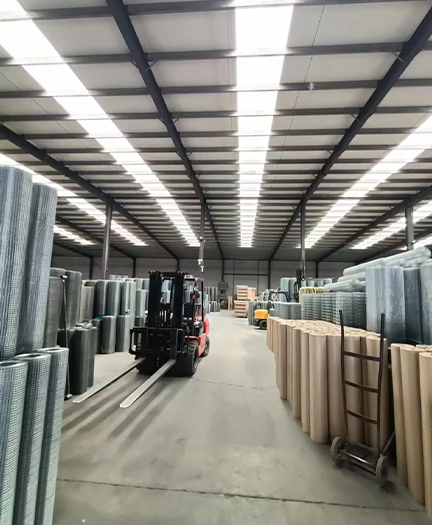-
 Afrikaans
Afrikaans -
 Albanian
Albanian -
 Amharic
Amharic -
 Arabic
Arabic -
 Armenian
Armenian -
 Azerbaijani
Azerbaijani -
 Basque
Basque -
 Belarusian
Belarusian -
 Bengali
Bengali -
 Bosnian
Bosnian -
 Bulgarian
Bulgarian -
 Catalan
Catalan -
 Cebuano
Cebuano -
 China
China -
 Corsican
Corsican -
 Croatian
Croatian -
 Czech
Czech -
 Danish
Danish -
 Dutch
Dutch -
 English
English -
 Esperanto
Esperanto -
 Estonian
Estonian -
 Finnish
Finnish -
 French
French -
 Frisian
Frisian -
 Galician
Galician -
 Georgian
Georgian -
 German
German -
 Greek
Greek -
 Gujarati
Gujarati -
 Haitian Creole
Haitian Creole -
 hausa
hausa -
 hawaiian
hawaiian -
 Hebrew
Hebrew -
 Hindi
Hindi -
 Miao
Miao -
 Hungarian
Hungarian -
 Icelandic
Icelandic -
 igbo
igbo -
 Indonesian
Indonesian -
 irish
irish -
 Italian
Italian -
 Japanese
Japanese -
 Javanese
Javanese -
 Kannada
Kannada -
 kazakh
kazakh -
 Khmer
Khmer -
 Rwandese
Rwandese -
 Korean
Korean -
 Kurdish
Kurdish -
 Kyrgyz
Kyrgyz -
 Lao
Lao -
 Latin
Latin -
 Latvian
Latvian -
 Lithuanian
Lithuanian -
 Luxembourgish
Luxembourgish -
 Macedonian
Macedonian -
 Malgashi
Malgashi -
 Malay
Malay -
 Malayalam
Malayalam -
 Maltese
Maltese -
 Maori
Maori -
 Marathi
Marathi -
 Mongolian
Mongolian -
 Myanmar
Myanmar -
 Nepali
Nepali -
 Norwegian
Norwegian -
 Norwegian
Norwegian -
 Occitan
Occitan -
 Pashto
Pashto -
 Persian
Persian -
 Polish
Polish -
 Portuguese
Portuguese -
 Punjabi
Punjabi -
 Romanian
Romanian -
 Russian
Russian -
 Samoan
Samoan -
 Scottish Gaelic
Scottish Gaelic -
 Serbian
Serbian -
 Sesotho
Sesotho -
 Shona
Shona -
 Sindhi
Sindhi -
 Sinhala
Sinhala -
 Slovak
Slovak -
 Slovenian
Slovenian -
 Somali
Somali -
 Spanish
Spanish -
 Sundanese
Sundanese -
 Swahili
Swahili -
 Swedish
Swedish -
 Tagalog
Tagalog -
 Tajik
Tajik -
 Tamil
Tamil -
 Tatar
Tatar -
 Telugu
Telugu -
 Thai
Thai -
 Turkish
Turkish -
 Turkmen
Turkmen -
 Ukrainian
Ukrainian -
 Urdu
Urdu -
 Uighur
Uighur -
 Uzbek
Uzbek -
 Vietnamese
Vietnamese -
 Welsh
Welsh -
 Bantu
Bantu -
 Yiddish
Yiddish -
 Yoruba
Yoruba -
 Zulu
Zulu
Ensuring Workplace Safety with Effective Scaffold Safety Net Solutions for Construction Sites
The Importance of Scaffold Safety Nets in Construction
In the construction industry, safety is paramount. Every year, countless accidents occur on job sites due to falls from heights, which can lead to serious injuries or even fatalities. One of the most effective ways to mitigate these risks is through the use of scaffold safety nets. These nets play a critical role in protecting workers, safeguarding equipment, and ensuring compliance with safety regulations.
What Are Scaffold Safety Nets?
Scaffold safety nets are specially designed nets installed around scaffolding structures to catch falling workers or materials. Made from robust, durable materials such as polyethylene or polypropylene, these nets can withstand significant loads and harsh weather conditions. They are typically used in construction, maintenance, and renovation projects, serving as a vital line of defense against accidental falls.
Why Are They Essential?
1. Fall Protection The primary function of scaffold safety nets is to prevent falls. Construction workers often operate at significant heights, and the risk of slipping or losing balance is ever-present. Safety nets act as a safety barrier, reducing the likelihood of injuries should a worker fall.
2. Material Containment Apart from protecting workers, safety nets help contain tools and materials that may inadvertently drop from scaffolds. This containment is crucial for preventing accidents that could injure other workers or pedestrians on the ground. By creating a secure environment, safety nets contribute to a smoother operational workflow.
3. Regulatory Compliance Many jurisdictions have strict regulations regarding fall protection in the construction industry. Implementing scaffold safety nets is often a requirement to meet the Occupational Safety and Health Administration (OSHA) standards or equivalent local regulations. Properly installed networks not only help companies avoid fines but also promote a culture of safety within the workplace.
4. Psychological Impact The presence of scaffold safety nets can have a profound psychological effect on workers. When employees know there are additional safety measures in place, their confidence and focus typically increase. This heightened sense of security can lead to better work performance and a safer overall environment.
scaffold safety net

Best Practices for Using Scaffold Safety Nets
For scaffold safety nets to be effective, they must be installed and maintained correctly. Here are some best practices
- Professional Installation It is crucial to have safety nets installed by qualified personnel who understand the specific requirements of the job site. Proper installation ensures the nets can withstand potential falls.
- Regular Inspections Safety nets should be inspected regularly to check for wear and tear, damage, or any other issues that could compromise their integrity. It is essential to replace any nets that show signs of degradation.
- Proper Training Workers should receive training on the importance of safety nets and how to operate safely on scaffolds. Awareness of their presence and function can reinforce a culture of safety on the job site.
- Use in Conjunction with Other Safety Measures While scaffold safety nets are an essential safety feature, they should be used in conjunction with other protective measures, such as harnesses, guardrails, and personal protective equipment (PPE), to ensure comprehensive safety.
Conclusion
Scaffold safety nets are an indispensable element of a safe construction environment. They offer critical protection against falls, help contain materials, ensure regulatory compliance, and enhance worker confidence. By following best practices in their installation, maintenance, and usage, construction companies can significantly reduce the risk of accidents on their job sites. Safety should always be the primary concern in any construction project, and scaffold safety nets are a vital tool in achieving that goal.
-
Shipping Plastic Bags for Every NeedNewsJul.24,2025
-
Safety Netting: Your Shield in ConstructionNewsJul.24,2025
-
Plastic Mesh Netting for Everyday UseNewsJul.24,2025
-
Nylon Netting for Every UseNewsJul.24,2025
-
Mesh Breeder Box for Fish TanksNewsJul.24,2025
-
Expanded Steel Mesh Offers Durable VersatilityNewsJul.24,2025











